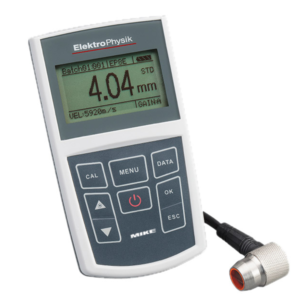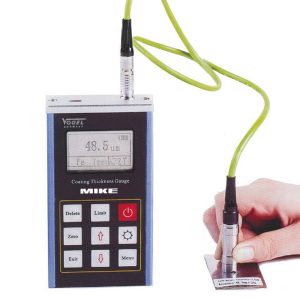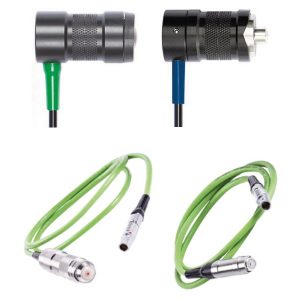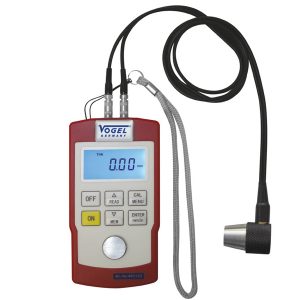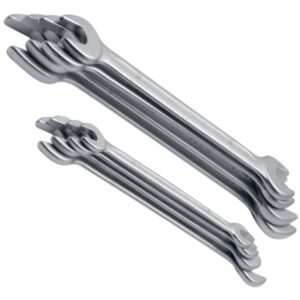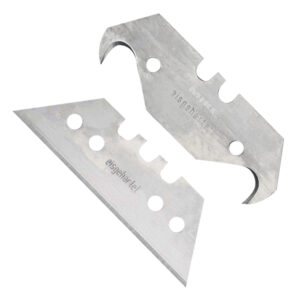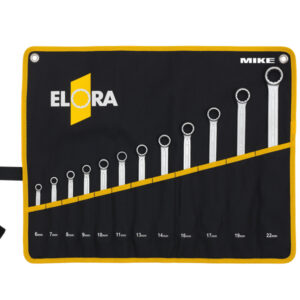An ultrasonic thickness gauge, also known as an ultrasonic thickness tester or meter, is a device used to measure the thickness of various materials using ultrasonic waves. It is commonly used in industrial and manufacturing settings for non-destructive testing (NDT) and quality control purposes.
The working principle of an ultrasonic thickness gauge is based on the time-of-flight principle. The device emits high-frequency ultrasonic waves, typically in the range of 1 to 20 megahertz (MHz), into the material being tested. These ultrasonic waves travel through the material and reflect back from the opposite surface or from any internal interfaces or defects within the material.
By measuring the time it takes for the ultrasonic waves to travel through the material and return to the gauge, the device can calculate the thickness of the material. The gauge is calibrated to the specific speed of sound in the material being tested, as sound waves travel at different speeds in different materials.
Ultrasonic thickness gauges are versatile and can be used to measure the thickness of a wide range of materials, including metals, plastics, glass, ceramics, composites, and more. They are often used in industries such as manufacturing, construction, aerospace, oil and gas, automotive, and marine.
The benefits of using ultrasonic thickness gauges include their non-destructive nature, portability, ease of use, and ability to measure thicknesses even through coatings or paint layers. They are particularly useful for assessing the integrity and corrosion levels of structures, detecting hidden defects, monitoring material degradation, and ensuring compliance with safety and quality standards.
Ultrasonic Thickness Gauger principles
The principle behind the operation of an ultrasonic thickness gauge is known as the time-of-flight principle. Here’s a more detailed explanation:
- Ultrasonic Wave Generation: The thickness gauge generates high-frequency ultrasonic waves using a piezoelectric transducer. The transducer converts electrical energy into mechanical vibrations, producing ultrasonic waves.
- Wave Propagation: The ultrasonic waves travel through the material being tested. They propagate as longitudinal waves, meaning the particles of the material vibrate parallel to the direction of wave propagation.
- Reflection and Echo: When the ultrasonic waves encounter an interface, such as the opposite surface of the material or an internal defect, a portion of the energy is reflected back towards the transducer.
- Transducer Reception: The piezoelectric transducer also acts as a receiver. It detects the reflected waves or echoes and converts them back into electrical signals.
- Time Measurement: The ultrasonic thickness gauge measures the time it takes for the ultrasonic waves to travel from the transducer, through the material, and back to the transducer. This time measurement is typically in the nanosecond range.
- Thickness Calculation: The gauge uses the measured time of flight and the known velocity of sound in the material to calculate the thickness. The velocity of sound depends on the material’s acoustic properties, such as density and elasticity.The calculation typically involves dividing the measured time by two and multiplying it by the velocity of sound in the material. This accounts for the round-trip travel of the ultrasonic waves.
- Display and Output: The calculated thickness value is displayed on the gauge’s screen, allowing the user to read and record the measurement. Some advanced models may have additional features like data storage, statistical analysis, and connectivity options for transferring data to a computer.
It’s important to note that the accuracy of the measurement depends on factors such as the material’s acoustic properties, the surface conditions, the transducer’s frequency, and the calibration of the gauge. Proper calibration for the specific material being tested is crucial to obtain accurate thickness measurements. - Calibration: Ultrasonic thickness gauges need to be calibrated to ensure accurate measurements. Calibration involves determining the velocity of sound in the material being tested. This is typically done by measuring the thickness of a calibration block with a known thickness and known velocity of sound. The gauge is adjusted or calibrated based on the comparison between the measured time of flight and the known thickness.
- Multiple Echo Technique: In some cases, the material being tested may have multiple layers or coatings. The multiple echo technique is used to measure the thickness of the base material while disregarding the thickness of the coatings. This technique relies on the fact that the reflected waves from each interface within the material produce multiple echoes. The gauge analyzes the time differences between these echoes to determine the thickness of the base material.
- Attenuation Compensation: Ultrasonic waves tend to lose energy or attenuate as they travel through the material. This attenuation can affect the accuracy of thickness measurements, especially for thick or highly attenuating materials. Advanced ultrasonic thickness gauges may have the capability to compensate for this attenuation, ensuring more accurate results.
- Transducer Selection: Ultrasonic thickness gauges come with different transducers that operate at specific frequencies. The choice of transducer depends on the material being tested and the desired measurement accuracy. Higher-frequency transducers are suitable for measuring thin materials, while lower-frequency transducers are used for thicker materials.
- Environmental Considerations: The accuracy of ultrasonic thickness measurements can be influenced by environmental factors such as temperature, humidity, and the presence of contaminants. Some gauges have built-in temperature compensation features to account for temperature variations and maintain measurement accuracy.
Overall, ultrasonic thickness gauges provide a reliable and non-destructive method for measuring the thickness of various materials. They have widespread applications in industries where accurate thickness measurements are essential for quality control, maintenance, and safety purposes.
Ultrasonic Thickness Gauge
Showing all 4 results

